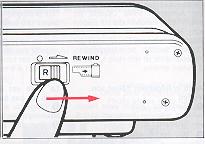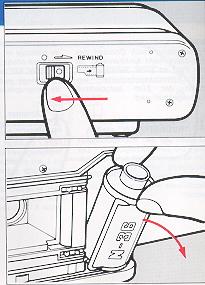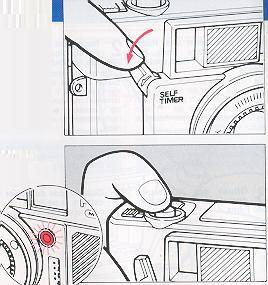and historical purposes, all rights reserved.
This page is copyright© by
This page may not be sold or distributed without
the expressed permission of the producer.
I have no connection with any camera company.
This camera manual library is for reference
and historical
purposes, all rights reserved.
This page is copyright© by
![]() ,
M. Butkus, NJ.
,
M. Butkus, NJ.
This page may not be sold or distributed without
the expressed
permission of the producer.
I have no connection with any camera company.
On-line camera manual library
If you find this manual useful, how about a donation of $3 to:
M. Butkus, 29 Lake Ave., High Bridge, NJ 08829-1701
and send your e-mail address so I can thank you.
Most other places would charge you $7.50 for a electronic copy
or $18.00
for a hard to read Xerox copy.
This will help me to continue to host this site,
buy new
manuals, and pay their shipping costs.
It'll make you feel better, won't it ?
If you use Pay Pal, use the link below.
Use the above address for a
check, M.O. or cash.
Back to main camera manual page
CLICK HERE FOR Yashica Auto Focus
Motor
PDF VERSION OF THIS
FILE
Slightly different version at top of page

Congratulations on purchasing the finest automatic camera available today,
the Yashica "Auto Focus Motor''. This handy camera features automatic focusing
and exposure setting so that all you need to do is train your camera on the
subject and press the shutter. And its built-in electronic flash unit lets you
get beautiful shots even indoors and at night. Anyone can enjoy easy picture
taking with this fully automatic camera that takes care of film loading and film
advancing before shooting and film rewinding afterwards. Before using this
camera, please familiarize yourself with the operating instructions in this
booklet so you will be able to use it properly and enjoy long usage.
|
Description of Parts 6 Inserting Batteries 10 Film Loading 14
Picture Taking 22 Prefocusing with the Focus Lock 30 |
Using Flash Indoors 34 Rewinding the Film 42 Using the Self-Timer 46 Camera Care 50 Battery Precautions 52 Specifications 54
|
 |
(1) Shutter Lock Knob |
 |
(14) Flash Ready Lamp (15) Back Cover Lock Release (16) Viewfinder Eyepiece (17) Back Cover (18) Battery Compartment Cover (19) Tripod Socket (20) Film Transport Indicator (21) Film Rewind Switch
|
Inserting Batteries
 |
The batteries are a vital power source
for operating your camera's film advance and rewind, auto focus, exposure
and flash systems all designed to prevent picture taking failures. The
camera will not operate without battery power.
1. Open the Battery Compartment Cover 2. Insert the Batteries · Do not use NiCd batteries. (Webmaster: those are different from the Alkaline rechargeable) |
< Run a Battery Check Before Each Shooting Session>
 |
Partially depress the shutter release button with the lens cap on or with the light sensors on lens mount front covered. If the red LED in the viewfinder goes on, the batteries are all right; otherwise, replace both batteries together with the same type. · When the exposure counter registers "S", pressing of the shutter release button will always wind on the film until the counter registers "1". |
FILM LOADING
 |
The "Auto Focus Motor" features a convenient system that
automatically advances the loaded film to the first frame.
1.Open the Back Cover
|
Make sure the film cartridge port is correctly positioned as shown
in the illustration on the left.
 |
3. Place Leading End of Film on the Take up Spool Place the
film so that it tracks within the pair of outer guide rails and its leading end
is positioned alongside the bar mark '-----'
(A) Take-up Spool (B) Guide Rails
|
 |
4. Close the Cover Close the cover and press until it snaps into place.
|
 |
5. Press the Shutter
Release The camera will automatically advance blank film until the first frame is reached and then set the exposure counter to "1". Your camera is now ready to shoot. If the film is being properly advanced, the film transport indicator will rotate. · Once the film begins to advance, remove your finger from the release button. |
Whenever the rear cover has been closed, depressing of the shutter release
button will always cause the camera to advance blank film.
Film Speed Setting
 |
The film speed number is vitally important in obtaining correct exposure so make sure that the film speed is set properly. The film speed is always indicated on the outside of the film box. Turn the film speed control ring until it is matched with the ASA rating of the film in use. Make sure that the film speed number clicks into place to assure proper exposure. The ASA film speed numbers on the film speed control ring are as shown in table below. |
Picture Taking
 |
With the "Auto Focus Motor' the focusing, exposure and film advancing functions are all done automatically. Place the main subject within the focus composition frame and simply press the shutter. Anyone can easily take beautiful shots with this camera. 1 Peer into Viewfinder and Set the Range
(B) Parallax Correction Frame 2 Placing Subject Within Focus Composition Frame for Optimum Focus
|
3. Pressing Shutter Release Gently to Take Photo
 |
When the shutter release button is pressed, the camera focuses with a mechanical meshing sound, activating the shutter almost simultaneously. When the finger is released from the button, the film is automatically advanced with the meshing sound. · When the shutter release is depressed, the pointer in the distance indicator window will simultaneously indicate the camera-to-subject distance. The pointer will disappear upon release of the finger from the shutter release. · Keep your fingers free of the image detecting windows while shooting so as not to obstruct the auto focus system. |
<Shutter Lock Knob>
 |
To lock the shutter release button, slide the shutter lock knob in the direction of the arrow until the letter "L" comes into view. When not taking pictures, make it a point to lock the release button as much as possible. Since the Auto Focus Motor's focusing mechanism is of the double-image converging type, there may be situations where it will be difficult to focus such as when focusing on walls with no contrasting features, dimly lit subjects, and orderly, repetitious lines and patterns. Since dirtying of the image distance windows with fingerprint marks and the like will impair the camera's focusing performance, make it a habit to replace the lens cap when not using the camera. |
Capturing the Decisive Moment
|
|
|
|
It is very difficult to take pictures of moving objects such as children at
play in a playground. However, there is nothing to it with the `'Auto Focus
Motor". All you need to do is sight your subject within the finder and capture
the decisive moment.
· When taking sequence shots, gently press the shutter release button, and then
release finger pressure from the button making sure that the meshing sound is
heard after each shot
Prefocusing with the Focus Lock
 |
Depending upon the composition, frame and focus your subject away from the picture frame center. In this instance, you must use the focus lock button. This will enable you to keep the main subject in sharp focus anywhere in the picture area. 1. Select the composition you want to use. Then train the focus / composition frame on your main subject and press the focus lock l button After making some sound, the camera will pre-focus on main subject and lock in the focus. 2. Then revert to the composition you 2 had in mind and press the shutter button. The main subject, placed to one side in the picture, will be in sharp focus. |
 |
When taking shots of two persons lined
abreast with some open space between them in the center of the picture,
pre-focus on either one of the subjects before composing your picture. This
will assure you of getting your subjects in sharp focus.
|
When the focus lock button is not used, the distant background scene will be
in focus and the main subject will be blurred as is evident from the
accompanying illustration.
Using Flash Indoors
 |
When shooting indoors, and in dim lighting conditions, partially depress
the release button If the red warning lamp inside the viewfinder lights, use the
built-in flash unit for beautiful, bright pictures. Naturally, you can let the
camera take care of the focusing and exposure setting.
1. Pop Up the Flash Unit
2. Readying of Flash Unit When the flash ready lamp comes on, the camera is ready for flashing. |
 |
3. Gently Press the Release
Button for Flash Shots The flash unit will light for flash shooting. Use the flash unit within its effective flash range from about 1.1 to 3 meters. its : i i 4. Putting away the Flash Unit
|
· If you release the shutter before the flash ready lamp comes on,
the flash unit will either fail to go off or will be too weak to produce
properly exposed shots.
· When you want to capture the mood indoors in dim lighting and outdoors in the
evening, take available-light shots without any flash. In these instances, use a
tripod to avoid camera shake, and couple it with the use of the self-timer for
greater safety.
When shooting with camera in vertical position, have the flash
unit on the upper side.
Even for Daylight Flash
|
|
|
When shooting subject against a bright window or with backlighting, use the
built-in flash to bring out details of the subject. Daylight flash is effective
from about 1.1 to 3 meters.
Also effective in following situations
(1) When subject's face is fully or partially shaded by trees.
(2) For portraits at dusk or dawn, or under overcast skies such as on a rainy
day.
Rewinding the Film
 |
If the shutter release and film transport do not function when the shutter release is pressed you have come to the end of the film roll. Use the film rewind switch for automatic film rewinding. 1. Set the Rewind Switch to "REWIND"
|
 |
2. When Finished Rewinding Film, Reset the Film Rewind Switch If the film rewind switch is not switched off, the rewind motor will continue running. 3. Open the Back Cover and Remove the Film
|
Using the Self-Timer
 |
Use the self-timer when you wish to include, yourself in a
group picture or take a picture of yourself.
1. Set the Self~timer Lever
2. Press the Shutter Release Button
|
When taking pictures of yourself with the self timer Select
a spot that is about the same focusing distance from where you will be situated
when the picture is being taken, and prefocus on it.
· The self-timer can be cancelled at any time by resetting
the lever to its original position.
· Use a tripod to steady the camera
· When not using the flash unit for extended
periods, test flash it occasionally to help maintain capacitor performance.
· If the image detecting windows are
fingerprint stained, do not attempt to rub off the stain but lightly wipe it off
with lens cleaning tissue moistened with some lens cleaning fluid. Use a blower
to remove dirt and dust from the glass surfaces.
· In summer, avoid leaving the camera in the
heat at the beach or in storage compartment of car as it will not only affect
film and battery performance but also the camera mechanism as well.
· Always clean the camera carefully after
using it at the seaside or in the mountains. Salt air has a corrosive effect on
the camera, and sand and dust can be harmful to the camera's mechanism.
· The camera carries a high-voltage circuit
which is dangerous. When the camera malfunctions, NEVER dismantle it in an
attempt to repair it.
Battery Precautions
· When not using the camera for extended
periods, remove the batteries to avoid damage from battery leakage.
· Battery performance is affected at very
low temperatures. When shooting in such conditions, make it a point to keep the
batteries warm or carry spare batteries, keeping them warm in your pocket or
other suitable place.
· When installing batteries, wipe both ends
clean. Oily smears on the battery contacts could cause poor electrical contact.
· Do not use NiCd batteries.
Specifications:
Type: 35 mm programmed shutter EE camera with built in flash unit.
Lens: Yashica Lens 38 mm f/2.8: 4-element, three-lens group
composition.
Shutter Programmed electronic shutter.
Self-timer Electronic (approx 9-second delay); LED flashes
during operation (accelerates about 2 seconds before shutter release as a
warning signal); cancelable even while in operation.
Exposure Control: EE type, programmed shutter with SPD sensor.
EV range from EV 6 (f/2.8 1/8 sec.) to EV 17 (f/16, 1/500 sec.) at ASA 100; when
value under EV 8.5 (f/2.8, 1/45 sec.), a red warning lamp lights up.
Film Speed Scale: ASA 25 to 400
Viewfinder Albada-type, direct-viewfinder (with parallax
correction frame) magnification of 0.42 with focus composition frame and red
warning lamp incorporated inside. Auto Focus System: Auto
focusing system. Auto focus range from 1.1 to infinity. Provided with focus lock
button Film Advance: Motor driven automatic film advance
(operated with shutter release button)- provided with film transport indicator.
When film has been advanced, the system automatically stops and switches itself
off.
Film Rewind: Motor driven automatic film rewind system
(operated with film rewind switch).
Film Loading: Auto-loading type; automatically advances film to
frame number "1" on exposure counter.
Exposure Counter: Auto resetting, additive type.
Number of Exposures: Without using flash-- over 30 36-exposure
rolls of film: using flash-- over two rolls of 36-exposure film; (When using
fresh alkaline batteries, at normal temperatures )
Built-in Flash: Electronic pop-up flash; GN 12 (ASA 100, in
meters); with flash-ready lamp; daylight synch capability
Recycling Time: Approx. 8 sec (at normal temperatures, using
fresh alkaline batteries).
Power Source: Two 1.5 V M-size batteries. Battery check by
means of red warning lamp inside viewfinder.
Filter Size: 40.5 mm diameter
Size and Weight: 131 (W) x 74 (H) x 52 (D) mm; 380 grams (w/o
batteries).
Specifications and external design are subject to change
without advance notice.